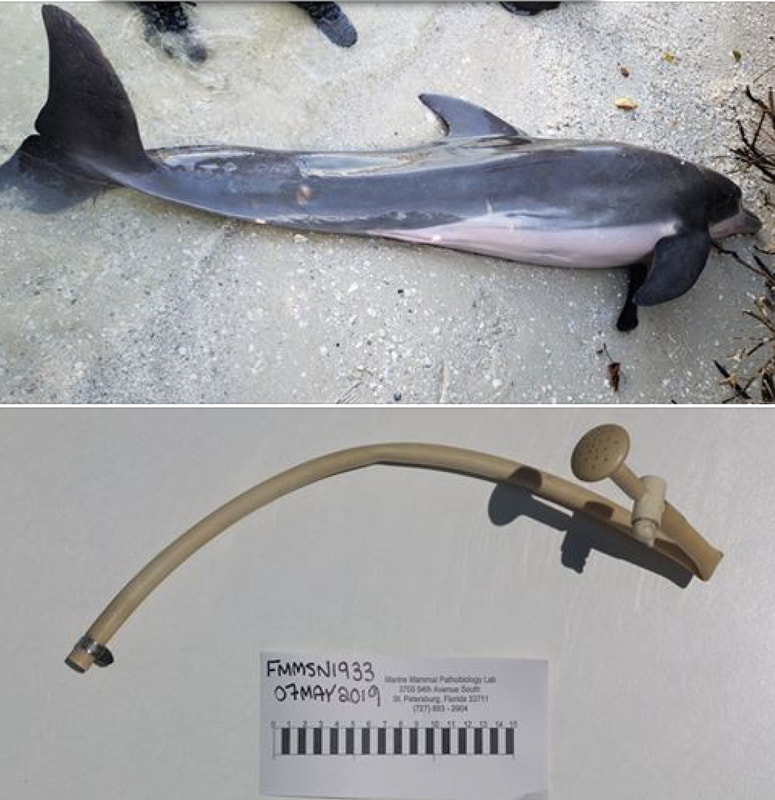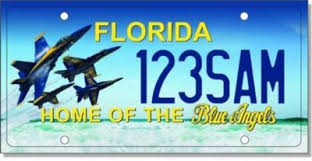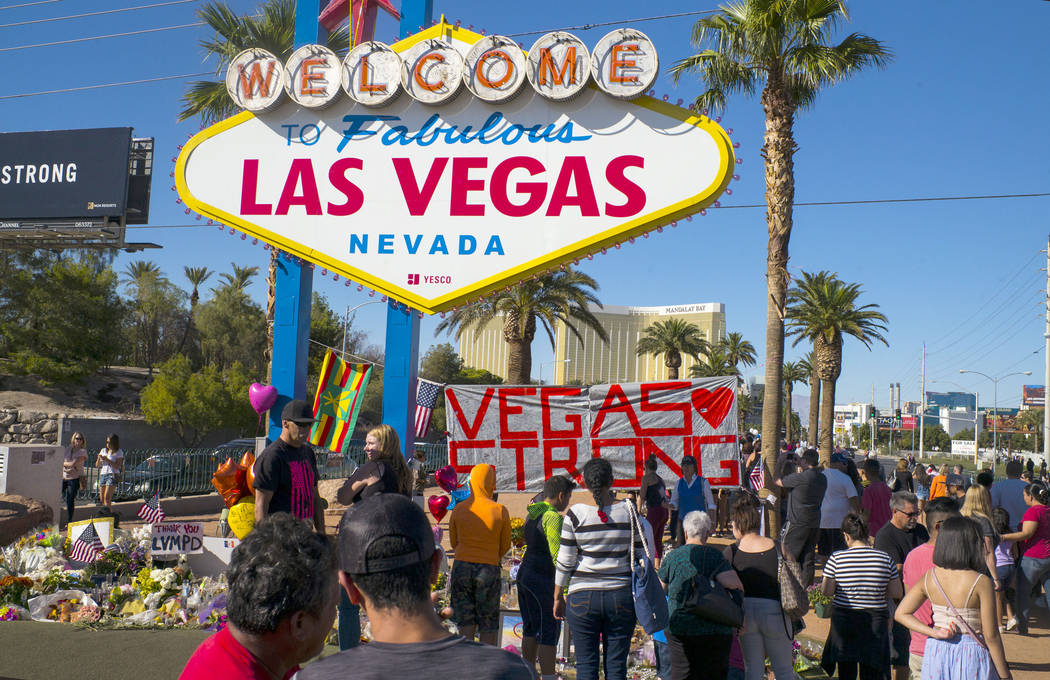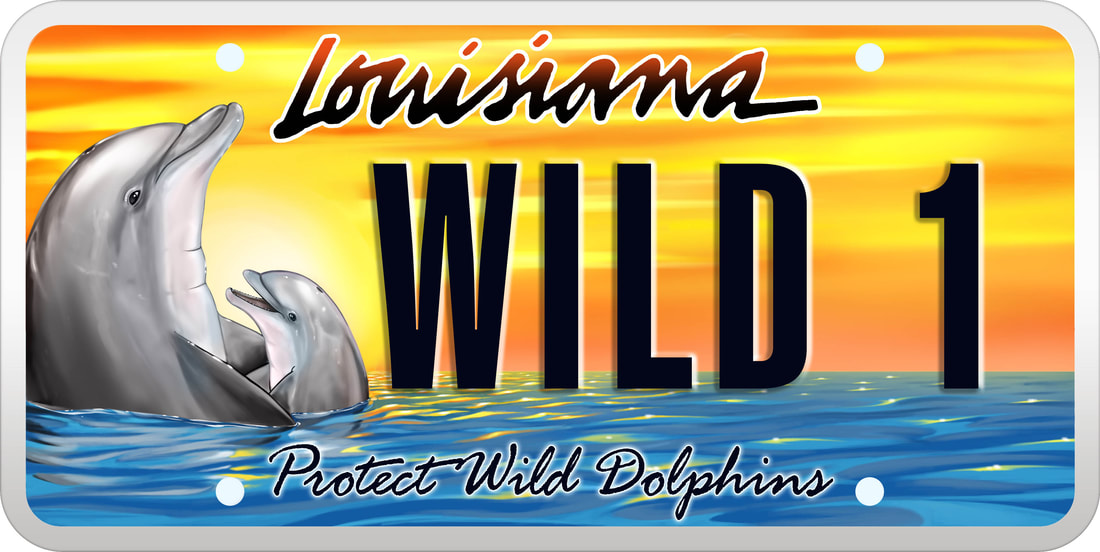Gifts to Charity Dropped 1.7 Percent Last Year, Says ‘Giving USA’ - Michael Towner, Iconic Legacy7/31/2019  Photo by Ron Coddington Photo by Ron Coddington Last year was a tough one for many charities even though the overall economy was strong: Donations declined 1.7 percent, to $427.7 billion, according to the annual “Giving USA” report released Tuesday. The drop in contributions — due largely to average Americans donating less — follows four years of sustained growth that reached a high of $435.1 billion in 2017. A drop in total giving is relatively uncommon. “Giving USA,” which examines contributions from individuals, foundations, and corporations, noted that the decline was just the 13th drop in overall giving it had charted in the past four decades. The decline could be a sign of trouble ahead, particularly if a recession is on the horizon and changes to the tax code cause a long-term challenge for fundraisers. Or it could be a sign that the erratic stock market in the last half of 2018, combined with uncertainty about the tax law, made last year especially difficult. Emphasizing that their results were based off of projections, researchers were careful to say that it was impossible to know yet just how concerned charities should be that giving was off last year. Americans decreased their giving 3.4 percent from 2017 levels, dropping from $302.5 billion to $292.1 billion. Historically, individuals have provided at least 70 percent of overall giving, but in 2018 they gave just 68 percent. Another 18 percent of contributions came from foundations and 5 percent from corporations. One reason for the decline may have been that donors were spooked by the stock market’s nosedive in December. “Stock markets really went down at exactly the wrong moment last year,” said Thomas Kurmann, director of development at Doctors Without Borders USA. “Even though the economy’s good, the markets have been on a rollercoaster, and that rollercoaster leads to uncertainty,” said Steve MacLaughlin, vice president for data and analytics at Blackbaud. When people don’t have a clear picture of their future, they usually forestall major financial decisions, like a large end-of-year gift, he said. This donor hesitancy is significant because in recent years, many charities saw big donors making up for large losses in the share of middle-class donors’ giving. But that wasn’t the case last year. “For many years, the biggest gifts — the megagifts — have been able to sustain growth and made up for the loss of household giving,” said Laura MacDonald, vice chair at the Giving USA Foundation and principal at the Benefactor Group. In 2018, however, those big contributions weren’t enough to stave off an overall drop in giving. Outside of the “Giving USA” report, other philanthropy trackers are finding similar trends extending into 2019. The Fundraising Effectiveness Project, which measures annual fundraising rates, has seen donations from individuals continue to fall this year. In the first quarter of 2019, the number of donors shrank by nearly 6 percent, while overall donations decreased just over 2 percent. More info, click here.
0 Comments
Specialty plate sales in the state of Arizona have raised $11.2 million for shareable cases, according to the Arizona Department of Transportation.
The causes that the $11.2 million supports ranged from Arizona veterans programs, Special Olympics, organ donation, hunger relief, university scholarships and many others. ADOT reported that money raised has steadily grown for a number of years with $8.7 million in 2015, $9.4 million in 2016 and more than $9.8 million in 2017, followed by $10.6 million in 2018 Through a prepared statement, ADOT Motor Vehicle Division Director Erik Jorgensen stated “The specialty plate program is a real point for pride for Arizona and is a tremendous success. Raising more than $11 million in the last fiscal year proves Arizonans are both generous and eager to support great causes and organizations they believe in.” ADOT said that drivers who wish to select a plate can go to servicearizona.com and once a selection is made, may click on a link for more information that outlines the cause supported by the plate’s sale. Once in the portal, it is possible to select and click on the plate style, enter your choice of letter and/or numbers and click to see if that combination is taken or not free of charge. When ordering the plate, one must: Enter the vehicle information for the vehicle you are requesting the specialty plate, confirm record information displaying it’s for the correct vehicle, select your plate sale and plate format (if applicable), view total fees, provide credit card information and pay fee, print confirmation and attach to your current registration until your request plate arrives, provide feedback by answering a quick and simple optional survey. Specialty plates are created by an act of the Arizona Legislature. The program, which began in 1989, is administered by the MVD. Total annual revenue generated from specialty license plates continues to try to get back to the annual revenue amount that was generated from the program prior to the significant increase in registration fees and taxes that were introduced by the DMV in August, 2009. In 2008, 1,524,608 specialty license plates were sold, generating $34,383,524.65, compared to 1,446,623 ($33,509,016.00) in 2018. Prior to 2009, specialty license plate sales increased every year, despite the economic recession. The 2009 Florida State Legislature significantly increased vehicle registration fees, particularly with respect to purchasing specialty license plates. In 2008, annual sales of Florida Specialty License Plates amounted to 1,623,486. Since 2009, there has been a 19.78% decline in Specialty Plate sales, reflecting approximately $7 million lost in annual revenue.
In September, 2013, the Florida Legislature reduced some fees associated with vehicle registrations, however, did not address the significant increase in the cost to purchase a new specialty license plate that was imposed in 2009. The estimated eCommerce revenue in US Dollars of the top 5 countries in 2018 were:
1. 584 billion for China, (110 billion higher than the United States) 2. 474 billion for the US 3. 105 billion for Japan 4. 103 billion for UK 5. 70 billion for Germany As expected, electronics dominate the market, followed by miscellaneous (including office supplies, gifts, novelty and souvenirs) and clothing. Categories such as food and beverages have a very small share of online sales. But all of these markets will evolve in the coming years. (Source: Statista, Roland Berger) NOAA: 260 Dolphins Dead on Gulf Coast, Triple Usual Number - Michael Towner, Iconic Legacy6/14/2019 Authorities say more than 260 dolphins have stranded across the U.S. Gulf Coast since Feb. 1, triple the usual number.
National Oceanic and Atmospheric Administration scientists say it's too early to know the cause but they're investigating whether salinity changes from high rivers and a Louisiana spillway opening contributed to the deaths. NOAA says on its website that a number of the dolphins stranded from Louisiana to the Florida Panhandle had open sores consistent with freshwater exposure, but such sores are "not uncommon" in the spring. A Mississippi scientist says the spillway opening is at least partly to blame for 126 deaths across Mississippi's coastline, calling it worse than the BP oil spill in 2010, when 91 dead dolphins were found in Mississippi during the entire year.  Florida officials discovered a two-foot plastic shower hose in the stomach of a seven-foot-long dead male dolphin that washed ashore earlier this month, CNN reports. The Florida Fish and Wildlife Commission announced on May 17 that the dolphin was found at Fort Meyers Beach a week before. Biologists performed an autopsy, which revealed the hose and other plastic parts in the dolphin's stomach and esophagus. "Your actions can make a difference - secure and properly dispose of trash, take part in coastal cleanups and share information on how to reduce marine debris with others," the agency wrote in a Facebook post. The dolphin is the second stranded one that officials have found at the beach in a month. A months-old dolphin was found on April 23 with a piece of balloon and two plastic bags in its stomach. Biologists determined that it was in poor health and decided to "humanely euthanize" it. "This finding highlights the need to reduce single use plastic and to not release balloons into the environment," the commission said at the time. More than 700 species of marine animals come across litter, much of which is plastic, according to the University of Plymouth. An estimated 12 million tons of plastic waste enter the ocean every year, the institution further notes. Several states have made an effort to limit the use of plastic in response. In 2015, Hawaii became the first to ban plastic bags in all of its counties. California and New York have since followed suit with similar legislation. For more info, click here  The Chronicle of Philanthropy reports that best-selling author, podcaster, and investor, Tim Ferriss, who is now 42, disclosed that his decision to devote his philanthropy to research into psychedelic drugs is built on a solid foundation of peer-reviewed science. "I’ve spent hundreds of hours interacting with researchers to get a better understanding of the science," he says. It is also very personal. Ferriss’s best friend from childhood died of a fentanyl overdose and his aunt, after injuring her shoulder, became addicted to Percocet and alcohol and died last year. Ferriss himself struggled with depression and anxiety as a college student at Princeton. He tried "magic mushrooms," which contain psilocybin, and found relief. "I was able to finally see things clearly," he says, "to appreciate all of the incredible chance blessings that I experienced in my life." So, Ferriss decided to help fund research at John Hopkins to see if psilocybin-assisted therapy could treat opioid addiction. Ferriss is quick to caution that no one should experiment with illegal drugs under uncontrolled circumstances. But like many, if not most, of the donors to psychedelic science, his passion is driven both by the head and the heart. Usona founder Bill Linton, Cody Swift of the Riverstyx Foundation, and David Bronner, who leads Dr. Bronner’s, which makes organic personal-care products, have all experienced or seen up close the healing potential of psychedelics. Donors are also motivated because, they say, conventional treatments for the pain caused by PTSD, depression, anxiety, and addiction often fall short. Drug overdoses killed more than 70,000 Americans in 2017, which is more than the number who died during the entire Vietnam War. "These compounds are by no means a panacea," Ferriss says. "But they show tremendous promise for serious conditions that currently have few or no effective treatments." Ferriss has formed a foundation and pledged $2 million of his own money to fund psychedelic science. "Having done a few years of due diligence," he adds, "I’ve decided to push all my chips in." Other major donors include David Bronner and his family, which owns Dr. Bronner’s, a company that makes organic personal-care products; Bill Linton, the founder and CEO of life sciences company Promega, who started a nonprofit to secure government approval for psilocybin to alleviate depression; Rebekah Mercer, whose concern focuses on veterans with PTSD; and the children of the late Richard Rockefeller, former chair of the Rockefeller Brothers Fund, who was a passionate advocate for the research. Others supporting the research include the foundation of Facebook co-founder Dustin Moskovitz and his wife, Cari Tuna; the foundation of Nick Pritzker, a venture capitalist and the former president of the Hyatt hotel chain, and his wife, Susan; George Sarlo, a Holocaust survivor and founder of an investment firm; the entrepreneur Elon Musk; Groupon co-founder Andrew Mason; and an anonymous Bitcoin millionaire known only as Pine, who says his philanthropy was inspired by a drug trip. It’s all the more remarkable because the drugs being studied — primarily psilocybin, which comes from so-called magic mushrooms, and MDMA, the active ingredient in street drugs known Ecstasy or Molly — are not only illegal but designated, along with heroin and fentanyl, as Schedule 1 drugs by the Drug Enforcement Administration, a classification reserved for substances thought to have a high potential for abuse and no currently accepted medical use. For more info on studying psychedelics, click here. Ten per cent of the oxygen we breathe comes from just one kind of bacteria in the ocean. Now laboratory tests have shown that these bacteria are susceptible to plastic pollution, according to a study published in Communications Biology.
"We found that exposure to chemicals leaching from plastic pollution interfered with the growth, photosynthesis and oxygen production of Prochlorococcus, the ocean's most abundant photosynthetic bacteria," says lead author and Macquarie University researcher Dr Sasha Tetu. "Now we'd like to explore if plastic pollution is having the same impact on these microbes in the ocean." Plastic pollution has been estimated to cause more than US$13 billion in economic damage to marine ecosystems each year, and the problem is only getting worse with marine plastic pollution estimated to outweigh fish by 2050. "This pollution can leach a variety of chemical additives into marine environments, but unlike the threats posed by animals ingesting or getting entangled in plastic debris the threat these leachates pose to marine life has received relatively little attention," says Dr Lisa Moore, a co-author on the paper. In the first study of its kind, the researchers looked at the effects these chemicals have on the smallest life in our oceans, photosynthetic marine bacteria. For more, click here.  HB 505, entitled: “Transportation Credentials”, sponsored by Jamie Grant, R-Tampa (as well as Jackie Toledo, R-Tampa, Melony Bell, R-Fort Meade, Chuck Clemons, R-Newberry, Delores Hogan Johnson, D-Fort Pierce, Ralph Massullo, R-Lecanto, and Jayer Williamson, R-Pace as well as the State Affairs Committee, Transportation & Tourism Appropriations Subcommittee and the Transportation & Infrastructure Subcommittee); and SB 1104, entitled "License Plates" sponsored by Aaron Bran, R-Jacksonville and Doug Broxson R-Pensacola (as well as the Infrastructure and Security Committee), designated the 'train' bills for all things specialty license plate, both came to a screeching halt, despite having more than 90 registered lobbyists pushing the bills.  The 'Blue Angels' specialty license plate managed to jump off the train and soar above onto SB 620, after the bill had passed all of its committees, sponsored by Doug Broxson, R-Pensacola (and the Rules and Military and Veterans Affairs and Space Committees). The Blue Angels is the first specialty license plate to be approved in Florida for many, many years and not for want of trying.  The 2018 license plate bill in the House (HB 505) was once again sponsored by James ‘JW’ Grant, R- Tampa, a 36 year old entrepreneur who attended Auburn University and Stetson College of Law. He is a member of Ducks Unlimited, Tampa Bay 100 Chapter, General H. Norman Schwarzkopf Children's Home Sporting Clays Classic, and the National Rifle Association. It has been a number of years now that Rep Grant has took the helm to lead the charge for new specialty plate rules and new specialty plates and failed. Among the over 30 proposed license plates that were contained in HB 505 and SB 1104 were plates that have been trying to gain legislative approval for over five years. Lobbyists for Orlando City Soccer Club, Coastal Conservation Association, Lauren's Kids, the Independent Colleges & Universities, Moffitt Cancer Center, Rotary's Camps, Tampa Bay Lightning, Orlando Magic, Florida Off Road Foundation, Donate Life, American Legion, Veteran's of Foreign Wars, Ducks Unlimited, Florida Association of Healthy Start Coalitions, Florida Beekeepers Research Foundation, Dan Marino Foundation, Inc., New College Foundation, Broward County, Florida Municipal Electric Association, Florida Tax Collectors, Inc. and numerous tech companies all lined up on either side of the bill with conflicting opinions on language, as well as the Department of Highway Safety and Motor Vehicles own paid lobbyist, Kevin Jacobs. In 2008, a year when 4 more specialty plates were approved, (Florida Tennis, Lighthouse Association, In God We Trust and Horse Country) the Florida Legislature imposed a moratorium on the creation of new plates, which was extended during the 2014 Legislative Session to July 1, 2016. This bill also revised the requirements for requesting the approval of a specialty license plate by replacing the scientific sample survey of 30,000 Florida motor vehicle owners and an application fee of $60,000.00 with a pre-sale voucher, requiring the pre-sale of 1,000 vouchers at $30.00, after legislative approval. During the moratorium, the Legislature proceeded to create 17 more specialty license plates, 15 of which were able to complete the pre-sell process. The last 4 plates to be created by the legislature became effective on 10/1/2014: Fallen Law Enforcement Officers, Florida Sheriff's Association, Kaiser University and Moffitt Cancer Center. In 2018 there were a total of 122 specialty license plates. Fallen Law Enforcement Officers (ranked 52) sold 9,414, Florida Sheriff's Association (ranked 68) sold 5,356, Moffitt Cancer Center (ranked 103) sold 1,374 and Kaiser University (ranked 116) sold 276. 1,561,215 specialty license plates were sold in 2018 - compared to 1,521,472 in 2017. American Red Cross, Clearwater Christian College, Donate Organs, Pass it On, Hispanic Achievers and St. John's River specialty license plates have been de-listed for lack of sales in 2015/2016. Support Soccer has been de-listed in 2018 due to the sponsoring charity dissolving. Protect Wild Dolphins, Protect Florida Whales, Save our Seas and Aquaculture are now managed by Harbor Branch Oceanographic Institute Foundation, Inc., a direct support organization (DSO) of Florida Atlantic University.  Harbor Branch Oceanographic Institute Foundation, Inc., a direct support organization of Florida Atlantic University, that now has five specialty license plates under its belt, mobilized 8 lobbyists in this year's legislative session to fend off a challenge from the Florida marine mammal stranding network members, spearheaded by One Ocean One Health Research and Conservation Institute, based in Marineland. Amendments were filed to attempt to take the Protect Wild Dolphins and Protect Florida Whales specialty plates from Harbor Branch, claiming that research and funding was being limited to FAU staff and employees and that over $2 million was being withheld by the DSO as a "reserve". Source  The deadliest mass shooting in modern American history could soon have a specialty Nevada license plate designed to generate funds to support those affected by the tragedy. Assembly Bill 333, if approved, would create the “One October” license plate, intended to commemorate and memorialize the victims of the Oct. 1, 2017, shooting at the Route 91 Harvest festival that left 58 dead and over 800 injured. “It’s not something our city is ever going to forget, so I think it’s important to remember those 58 people and this would be another way to do that,” Robone said. “The money is going to a great cause, so I don’t see it as any kind of disrespect, but moreso a tribute to the people who didn’t make it.” Robone said it’s important for shooting survivors to receive support for as long as they need it, and this plate could help. Similar initiatives memorializing other tragic incidents have been put forward in Nevada and elsewhere. Fees from the license plate would go to the state treasurer's office, which would then send the money to the Vegas Strong Resiliency Center every three months. The center would use the funding to help those affected by the shooting through its resources and referrals. Under the proposal, the plate would come with a $25 issuance fee and an additional $20 fee for renewal. Nevada has a “United We Stand” specialty license plate, which was created to “reflect the public’s solidarity after the acts of terrorism committed on Sept. 11, 2001,” according to the state Emergency Response Commission’s website, the organization that backed the plate. Initial plate registration fees run $62, with $25 of that going to provide grant funds to combat terrorism for local planning committees in Nevada. The fund receives $20 from each annual renewal fee as well. At least 12 other states have 9/11 inspired license plates, including New Jersey and Connecticut. New York approved a similar memorial plate last year, with the proceeds from those plates going toward a scholarship fund for relatives of the victims. The plate was supposed to roll out this week, but the bill’s organizers failed to post the required $6,000 bond to begin the plates’ production, delaying the rollout, according to the New York Post. In the early 2000s, Colorado approved the “Respect Life” specialty plate to recognize the victims and survivors of the 1999 Columbine High School mass shooting. When it was originally rolled out, officials hoped motorists would voluntarily donate to a special fund to help victims of the shooting but after lackluster donations, ties to it were severed by the state by 2004, according to the Denver Post. Since then the plates’ proceeds have gone directly to the state, the Denver Post reported. In Florida, a proposal to create the “Orlando United” license plate to commemorate the 2016 Pulse nightclub shooting was up for approval during the state’s legislative session. $25 per plate would have gone toward supporting mental health counseling for survivors. The plate failed to pass. |
BLOGArchives
January 2025
Categories
All
|

